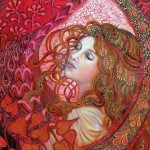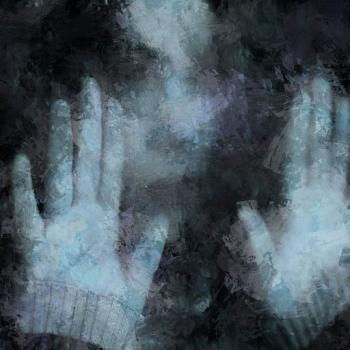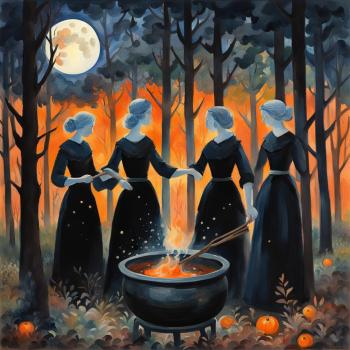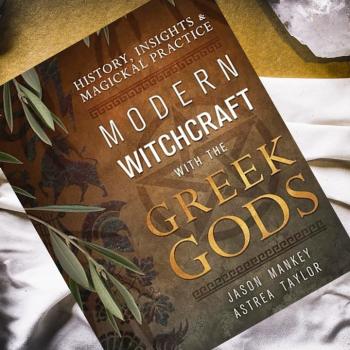Hear, O Israel: the Lord is our God, the Lord is One.
I fell in love with the Shema–the Jewish declaration of faith,which is recited twice a day–the first time I heard it. There was a problem, though. It was revoltingly patriarchal.
There is, obviously, the use of the word “Lord.” That word creates a persistent doublethink in Judaism. Many rabbis and scholars claim that God is beyond gender, even pointing to evidence in Genesis, but vehemently defend all the male pronouns and titles that are used to describe “him.” Even beyond that, though, I’ve never been on board with the idea of submitting to one god. In the West, submission and patriarchy are inextricably intertwined, practically synonymous. Commoners are expected to submit to kings, children to fathers, women to men. People of color are expected to submit to white people (although this phenomenon would more accurately be described as kyriarchy). Choosing one person to elevate above all others has never worked very well in human societies; why in the world would it work on a spiritual level? Whether you take the Shema to mean “we worship our tribal god to the exclusion of other tribal gods” or “our tribal god is the creator of the universe and all other gods are false,” it’s a sentiment I just can’t express.
So why, then, did I love it? I can’t honestly say. The prayer is simple, yet holds many layers of meaning. I think I liked that it was addressed to a community rather than the deity. As I’ve written before, many years ago I left Witchcraft for a time and tried to be wholly Jewish, and during that time I made an effort to recite the Shema. It never happened, though. Every single day I either forgot, or couldn’t find a convenient time or place, or simply got tripped up trying to say it. It felt like trying to hear a softly hummed song with your neighbor’s bass thudding through the walls. I could only ever catch the faintest strain of what the prayer was trying to tell me.
It wasn’t until I discovered feminist and Goddess-oriented versions of the prayer that it really spoke to me. And it wasn’t until I transferred the formula into a fully Pagan context that it came to life.
Here’s the version I use now, inspired by Marcia Falk’s Book of Blessings and the Siddur HaKohanot:
Hear, O my people: we are the body of the Goddess, and the many are One.
There’s more to the Shema, which I’ll talk about in my next post, but this line opens my morning prayers and helps close my evening ones. What I like about this version is that each segment is open to multiple interpretations, and different interpretations speak to me on different days. Let’s start from the end:
The many are One.
There are many ways to think about this concept, ranging from monism to a literal scientific worldview.
The Cosmos reboot is probably one of my favorite shows of all time. Most people don’t know this about me, but I actually make a point to watch every episode at least twice a day. Sure, I lost my job and I haven’t slept for three months, but it’s worth it! Neil is worth it. The episode entitled “Some of the Things that Molecules Do,” which explains DNA, evolution, and the core traits human beings share with all other life, makes me tear up every time:
Science reveals that all life on earth is one…. Accepting our kinship with all life on earth is not only solid science. In my view, it’s also a soaring spiritual experience.
Consider this. When you sit down to a meal, no matter what you’re eating, you’re consuming a member of your own family. Profound, no? And this idea goes even deeper when you get to the atomic level. As Carl Sagan said, we are made of starstuff.
The line also invites one to contemplate the nature of the gods, even if one is a hard polytheist. If it’s a scientific fact that all matter in the universe comes from one source, then doesn’t it also stand to reason that, at their core, the gods are also all composed of one substance–perhaps even the same substance as us–even if they’re each a distinct being? Just food for thought.
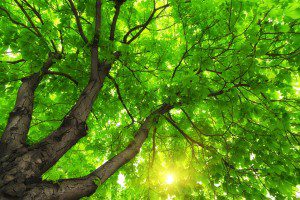
We are the body of the Goddess.
Who or what is the Goddess? I mostly subscribe to Reclaiming’s immanent worldview because it’s what makes sense to me. Even if I don’t always experience the Goddess as a sentient being who knows who I am, it’s hard for me to look at images of the Earth breathing and not feel like I’m a cell in her body. That feeling is incredibly moving for me.
Hear, O my people.
Who are my people? In the traditional Shema, they’re other Jews. In my version, they’re other Witches, other Pagans, and other humans; they’re animals, plants, rocks, spirits, fey folk, gods, elements, stars, planets, galaxies, and more. I recite the Shema to all things not to get them to see the world in the same way I do, but to celebrate the beautiful fact that, beneath the incredible diversity of the universe, all things come from the same source.
It’s funny–whenever my practice begins to falter, whenever I get tied up in how to please this deity or how to work that spell, it’s science that helps me center myself. The Tree of Life and the breathing Earth. The race of electrons and the swirl of galaxies. These things are my declaration. My Shema.
Of course, it’s impossible to experience them without also viscerally experiencing the atrocities that humans have committed against our family members and our habitats. I’ll talk more about that in my next post.
What is your declaration? How do you put your experience of the universe into words? What is the core of your practice? How do you honor this incredible reality?
Jewish Witch is published on alternate Tuesdays. Subscribe via RSS or e-mail!



